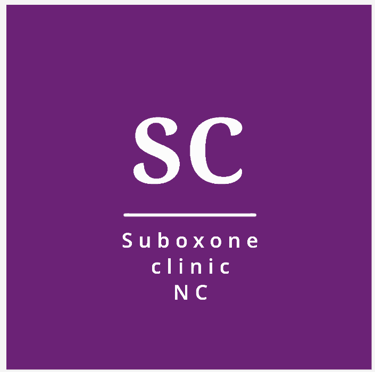The Importance of Online Suboxone Clinics in Addressing Opioid Addiction
The Importance of Online Suboxone Clinics in Addressing Opioid Addiction
Opioid addiction is a pressing public health crisis affecting millions of individuals and their families worldwide. The challenges associated with opioid dependency are multifaceted, encompassing physical, psychological, and social dimensions. Amidst this crisis, Suboxone has emerged as a highly effective treatment option for those struggling with opioid addiction. In recent years, the advent of online Suboxone clinics has revolutionized access to treatment, providing a lifeline to those who need it most. This article delves into the significance of Suboxone, the advantages of online clinics, and how these virtual platforms are transforming addiction treatment.
Understanding Suboxone and Its Role in Opioid Addiction Treatment
Suboxone is a medication approved by the FDA for the treatment of opioid dependence. It is a combination of buprenorphine, a partial opioid agonist, and naloxone, an opioid antagonist. This formulation works by reducing cravings and withdrawal symptoms, making it easier for individuals to transition from opioid use to recovery.
Buprenorphine: As a partial agonist, buprenorphine activates opioid receptors in the brain but to a much lesser extent than full agonists like heroin or prescription painkillers. This action helps alleviate withdrawal symptoms and cravings without producing the same high, reducing the risk of misuse.
Naloxone: This component is included to prevent misuse. If Suboxone is injected, naloxone will block the effects of opioids, precipitating withdrawal symptoms and deterring abuse.
The Rise of Online Suboxone Clinics
Traditionally, opioid addiction treatment required in-person visits to clinics or healthcare providers. However, several barriers, including stigma, lack of access to local providers, and time constraints, have historically hindered many individuals from seeking the help they need. The emergence of online Suboxone clinics has addressed these challenges by offering a more accessible, discreet, and flexible option for treatment.
Advantages of Online Suboxone Clinics
Increased Accessibility: Online clinics eliminate geographical barriers, making it possible for individuals in remote or underserved areas to receive treatment. This is particularly important in rural regions where addiction treatment services may be sparse or nonexistent.
Convenience and Flexibility: Virtual appointments can be scheduled at times that are convenient for the patient, reducing the need to take time off work or arrange childcare. This flexibility can significantly enhance adherence to treatment plans.
Privacy and Confidentiality: The stigma surrounding opioid addiction can deter individuals from seeking help. Online clinics provide a private and confidential environment, reducing the fear of being judged or recognized.
Continuity of Care: Online platforms enable continuous monitoring and support, ensuring that patients remain engaged in their recovery process. Follow-up appointments, therapy sessions, and medication management can all be conducted virtually, maintaining a consistent level of care.
Comprehensive Support: Many online Suboxone clinics offer a holistic approach to addiction treatment, incorporating counseling, behavioral therapy, and support groups alongside medication-assisted treatment (MAT).
How Online Suboxone Clinics Work
The process of receiving treatment through an online Suboxone clinic typically involves several steps, each designed to ensure that patients receive comprehensive, personalized care.
Initial Consultation: The journey begins with an initial consultation where the patient’s medical history, addiction severity, and treatment goals are assessed. This consultation can be conducted via video call, phone call, or through an online questionnaire.
Personalized Treatment Plan: Based on the initial assessment, a tailored treatment plan is created. This plan outlines the dosage of Suboxone, the frequency of follow-up appointments, and any additional therapies that may be beneficial.
Medication Management: Prescriptions for Suboxone are sent electronically to the patient’s pharmacy of choice. Online clinics ensure that patients have timely access to their medication and provide guidance on proper usage.
Ongoing Monitoring and Support: Regular virtual check-ins are scheduled to monitor progress, address any concerns, and adjust the treatment plan as needed. Patients may also have access to 24/7 support lines or chat services for immediate assistance.
Therapeutic Interventions: In addition to medication management, patients are often encouraged to participate in individual or group therapy sessions. These sessions can help address underlying psychological issues, develop coping strategies, and build a support network.
The Impact of Online Suboxone Clinics on Recovery
The shift to online Suboxone clinics has had a profound impact on the recovery process for many individuals. Here are some key benefits:
Enhanced Adherence: The convenience and flexibility of online clinics increase the likelihood that patients will adhere to their treatment plans. Regular check-ins and easy access to support services help keep patients engaged.
Reduced Relapse Rates: Continuous monitoring and support reduce the risk of relapse by addressing issues promptly and making necessary adjustments to the treatment plan.
Improved Outcomes: Studies have shown that patients receiving medication-assisted treatment (MAT) through online clinics often experience better outcomes, including reduced opioid use and improved overall health.
Holistic Care: The integration of therapy and support services ensures that patients receive comprehensive care, addressing both the physical and psychological aspects of addiction.
Challenges and Considerations
While online Suboxone clinics offer numerous advantages, there are also challenges and considerations to keep in mind:
Technology Barriers: Not all individuals have access to the necessary technology or internet connection for virtual appointments. Efforts must be made to bridge this digital divide.
Regulatory Hurdles: The provision of telehealth services, particularly for controlled substances like Suboxone, is subject to regulatory oversight. Providers must navigate these regulations to ensure compliance and patient safety.
Patient Engagement: Maintaining patient engagement in a virtual setting can be challenging. Strategies to foster a sense of connection and accountability are essential.
Comprehensive Care: While online clinics offer many services, some aspects of care, such as physical examinations, still require in-person visits. Hybrid models that combine virtual and in-person care may be necessary for optimal outcomes.
Case Study: Success Stories from Online Suboxone Clinics
To illustrate the impact of online Suboxone clinics, consider the following success stories:
John’s Journey to Recovery: John, a 35-year-old construction worker, struggled with opioid addiction for years. Living in a rural area with limited access to treatment, he turned to an online Suboxone clinic. The convenience of virtual appointments allowed him to seek help without missing work. With the support of his online provider, John successfully tapered off opioids and regained control of his life.
Maria’s Path to Sobriety: Maria, a single mother, faced the dual challenges of addiction and childcare responsibilities. Traditional in-person treatment was not feasible for her. Through an online Suboxone clinic, she received the medication and counseling she needed, all from the comfort of her home. Today, Maria is in recovery and thriving as a parent and professional.
Robert’s Overcoming Stigma: Robert was hesitant to seek treatment due to the stigma associated with addiction. An online Suboxone clinic provided a private and judgment-free environment, allowing him to access care discreetly. The continuous support and therapy helped Robert build resilience and maintain his sobriety.
The Future of Online Suboxone Clinics
The COVID-19 pandemic accelerated the adoption of telehealth services, including online Suboxone clinics. As the world moves towards a post-pandemic era, the role of these virtual platforms is likely to expand. Several trends and developments are shaping the future of online addiction treatment:
Telehealth Integration: The integration of telehealth into mainstream healthcare will continue to grow, providing more opportunities for online addiction treatment services.
Advanced Technologies: Innovations such as mobile health apps, wearable devices, and artificial intelligence will enhance the delivery of care, offering personalized and data-driven treatment options.
Regulatory Evolution: As telehealth becomes more prevalent, regulations will evolve to support the safe and effective provision of online addiction treatment.
Collaborative Care Models: Hybrid models that combine online and in-person care will become more common, ensuring that patients receive comprehensive and flexible treatment.
Conclusion
Online Suboxone clinics represent a transformative approach to opioid addiction treatment. By leveraging technology, these clinics provide accessible, convenient, and comprehensive care to individuals who might otherwise face significant barriers to treatment. As the healthcare landscape continues to evolve, online Suboxone clinics will play a crucial role in addressing the opioid crisis and supporting individuals on their journey to recovery.
The benefits of online Suboxone clinics are clear: increased accessibility, convenience, privacy, continuity of care, and holistic support. However, challenges such as technology barriers and regulatory hurdles must be addressed to fully realize the potential of these virtual platforms. With ongoing advancements in telehealth and a commitment to patient-centered care, online Suboxone clinics are poised to make a lasting impact on the fight against opioid addiction.
For individuals seeking help, the message is simple: You are not alone, and help is just a click away. Online Suboxone clinics offer a lifeline to those in need, providing the support and resources necessary to overcome addiction and reclaim their lives. If you or someone you know is struggling with opioid addiction, consider reaching out to an online Suboxone clinic today. The path to recovery begins with a single step, and with the right support, a brighter future is within reach.


